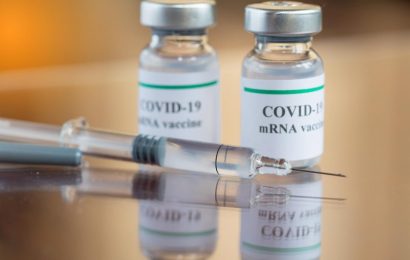In recent years, schools cut back on arts and physical education to make way for more instructional time. All that work and no play may be making Jack and Jill, well, dull. But new research shows that exercise can make the brain sharper.
The study demonstrated that a prolonged regimen of aerobic and resistance exercises improved multi-tasking skills, academics, and overall intelligence.
“We have compelling evidence that exercise would improve the performance of these kids,” Francisco B. Ortega, PhD, professor of sports medicine at the University of Granada in Spain, said. “Intelligence has been traditionally seen as something people have or they don’t, but we have shown that it is something modifiable, malleable by exercise, at least in this sensitive period of life when brain structure and function is still developing.”
For the study, published recently in JAMA Network Open, researchers asked 109 obese or overweight children to participate in exercise sessions at least three times per week over a 20-week period. Intelligence testing after exercise interventions revealed improvements in scores of academic performances in both math and reading as well as gains in memory.
Ortega’s group found the children’s multi-tasking abilities, problem solving, and working memory increased the more they exercised. But even with MRI scans and neuroimaging analysis, the scientists could not conclusively say where in the brain these improvements are happening, or how.
“This is the first study that showed the dimensions of how exercise can change the brain, but we need to go further into the data to explain what could be driving some of these changes,” he told Medscape Medical News.
Ortega and colleagues characterized the effects of the exercise regimen on cognitive flexibility and intelligence as “medium-large” and the effects on academic performance as “small.”
Ortega said previous studies of exercise and brain health have used animal models to identify potential biomarkers that could determine how the brain reacts to increased physical activity. Previous work has also examined the effects of exercise on adolescent brains, aligning with findings that show exercise benefits academic performance, he said.

Dr Soonjo Hwang
Soonjo Hwang, MD, research director of psychiatry at the University of Nebraska, Omaha, said aerobic exercises like running and rowing improve brain function in various ways. Exercise allows more oxygen and blood to pump to the organ, improving memory, academic performance, and reading comprehension, as well as emotional regulation by increasing the secretion of hormones like serotonin and dopamine.
“Clinicians should recommend regular exercise not just for physical development, but for their cognitive development,” said Hwang, who was not associated with the study.
Hwang noted that the children’s skills and cognitive flexibility in reading, problem solving, and math improved along with their overall intelligence, suggesting varied increases in brain function and skill in more than just intelligence alone. And even a small amount of physical activity can help, he added.
“Nowadays, we live a very sedentary lifestyle. Most people think exercise is just about benefits of the body, but I think it’s important for parents to be aware that exercise is also for the brain,” Hwang said.
Ortega said results should be replicated in other studies with larger cohorts before it is considered strong evidence.
“We believe that the improvement might have been bigger than expected due to a number of reasons, including participants who had worse baseline performances and more room for improvement, high-intensity workouts for a long time, and certain cognitive demands and coordination exercises during the training,” he said.
Tim Joos, MD, MPH, a pediatrician and internist in Seattle, called the new study a valuable addition to knowledge about brain function and exercise, even with its small sample size.
“I think this study is a rallying cry for more exercise in children and adults,” said Joos, who was not involved with the research. “There is more and more evidence for how processes like exercise or sleep can improve your overall cognitive and behavioral health.”
Another new study published in Family Practice found that overweight patients are more inclined than leaner people to disagree with their healthcare providers on advice for weight loss and lifestyle.
Obesity more than quadrupled among children from 1975 to 2016, from 4% to 18%, according to the World Health Organization. Meanwhile, fewer than 1 in 4 children (24%) participate in 60 minutes of physical activity a day, according to the Centers for Disease Control and Prevention.
Joos recommended further research into how local governments could create more open spaces like parks, community centers, and sports facilities that will encourage people to engage in physical activity. Ortega said he hopes his research can benefit the future health of children.
“Our research is coming from a new angle, that exercise can actually help the children to have a healthier development,” he said. ” We need to guarantee that our children are active enough, not only for our current and future mental and physical health, but also for communities.”
The study was supported by the Spanish Ministry of Economy and Competitiveness European Regional Development Fund (ERDF), the European Commission, and by the Alicia Koplowitz Foundation. Additional funding was obtained from the Andalusian Operational Programme supported with ERDF. This study was additionally supported by the University of Granada, Plan Propio de Investigación, Visiting Scholar grants and Excellence actions: Units of Excellence; Unit of Excellence on Exercise, Nutrition and Health (UCEENS) and by the Junta de Andalucía, Consejería de Conocimiento, Investigación y Universidades and the ERDF. This study was further supported by the EXERNET Research Network on Exercise and Health and by the High Council of Sports. Ortega, Hwang, and Joos report no relevant financial relationships.
JAMA Network Open. Published online August 30, 2022. Full text
For more news, follow Medscape on Facebook, Twitter, Instagram, YouTube, and LinkedIn
Source: Read Full Article


